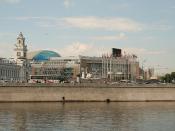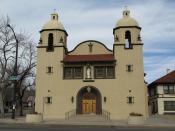5th Century: The Rhine and the Danube rivers formed a northern boundary of the empire. In earlier times, they had stationed soldiers on both sides of the rivers and built walls. Gradually, the power of the Roman Empire began to decline and the Roman legions could no longer safeguard the Roman frontier. More and more of the Germanic tribes crossed the border and occupied large sections of the empire (in both N. Africa and Europe).
Due to the constant invasions, the once powerful empire that existed disappeared in the West by about the year 500. By this time, the rich province of Gaul (France) had been conquered by the Franks. The Visigoths (Germanic tribe) had invaded Spain.
In 467 a king of the Ostrogoths (another German tribe) seized power from the last Emperor in the west and established his own kingdom in Italy.
In the 7th and 8th centuries, a new and more powerful threat came out of the East followers of Muhhamad (570-632), a native of Mecca who had united the warring tribes of Arabia by religious enthusiasm, the armies of Islam conquered much of the middle East, all of North Africa, and most of Spain in less than a century.
Such great Christian centers as Alexandria, Antioch, and Jerusalem fell to the Muslims. All this made travel and trading dangerous around the Mediterranean Sea. The European economy was strangled, and Europe was isolated from the East.
As the Roman Empire disappeared in the West, many wondered whether the Catholic Church would also disappear from Western Europe. The Barbarian invaders were not Catholics; most of them were pagans. If the Catholic Church were to survive in Western Europe, it would have to evangelize and convert these newcomers to Catholicism. That was not an easy task, however.


